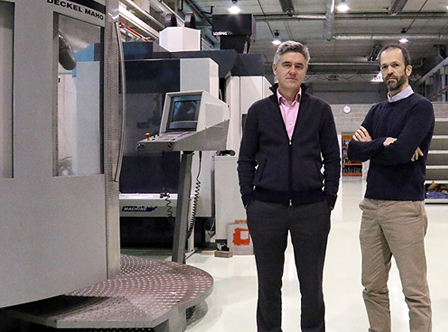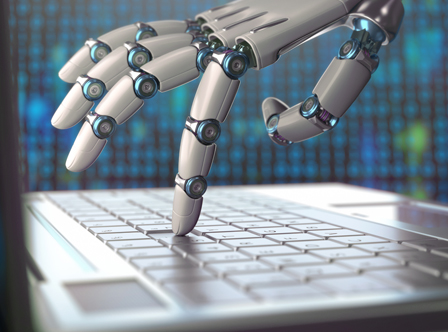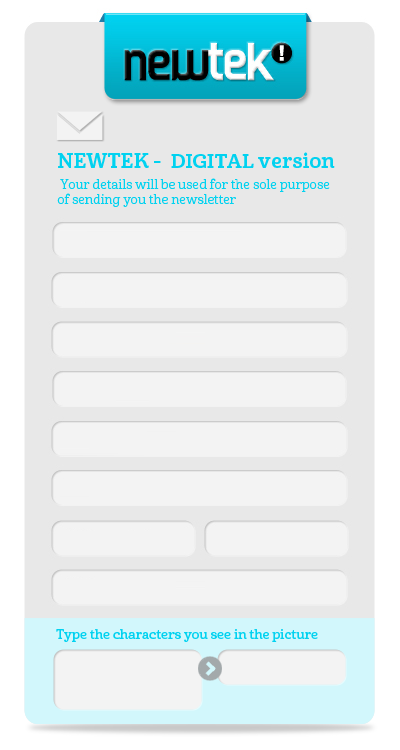THE EXPERT'S VIEW
The term Industry 4.0 embraces the “so-called fourth industrial revolution arising from a technological evolution brought about by the development of embedded systems, by their connectivity and by a confluence between the physical and virtual worlds. It provides integration capabilities for objects, information and people that could eventually produce a qualitative leap in terms of production and the use of goods and services”.
In order to set the context for this revolution, it would be appropriate to recall the different “waves” associated with the introduction of electronics and ICTs in terms of industrial production. The first wave, dating back to the eighties and early nineties, focused on process efficiency. These were the days when CAD, CAM, CIM (Computer Integrated Manufacturing), FMS (Flexible Manufacturing System) and other similar systems were introduced. As occurs nowadays, the main objectives were geared towards incorporating and giving greater flexibility to manufacturing systems that were limited by the available technology.
The second wave, in the nineties, coincided with the onset of the Internet and other closely related technologies such as Internet portals and solutions that enhanced collaboration and integration along the entire the value chain based on a highly extensive concept (SCM, CRM, etc.).
It was some time later, at the turn of the century, when connectivity reached machines and when concepts such as M2M (Machine to machine) were extensively implemented. This was later followed by another powerful concept, the Internet of things, linked to the development of IPv6. The proliferation of mobile devices with extensive connectivity capabilities grew substantially towards the end of the first decade of the new century and eventually gave rise to the so-called third wave in terms of ICT utilization and can be rated as the precursor of what is currently called the 4th revolution.
The term Industry 4.0, coined by Germany and whose debut coincided with the presentation of the document entitled “Recommendations for implementing the strategic initiative INDUSTRIE 4.0”, published by ACATECH in April 2013, falls under the dual German strategy of playing a leading role in terms of supplying equipment and solutions for industrial production at German manufacturing facilities to include them in value chains and digitize the entire production process.
Since then, many countries and regions (like the Basque Country, amongst others) have been making efforts for the purpose of making better use of the opportunities this new scenario offers. It must not be forgotten that whilst this movement was unfolding in the area of manufacturing, Europe was pushing for the so-called “Factories of the Future” concept via EFFRA (European Factories of the Future Research Association) in the guise of a public-private partnership that was implemented in 2008 to address innovative projects.
Businesses, in the meantime, have been giving thoughtful consideration to how this movement might affect them in order to react accordingly (using a defensive strategy) or have been pondering the opportunities this new scenario will offer (using a proactive strategy).
Regardless of whatever applies, the resulting thinking process will take place at three levels:
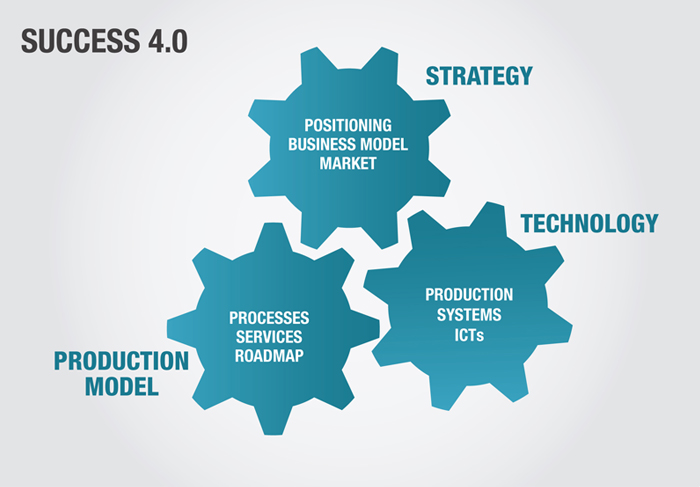
First and foremost, and from a strategic perspective, we must be fully aware of how it is we want to improve our value proposition. Embodying new technologies that give greater value to my product is not the same thing as setting them up on machines to be used as tools to achieve operational efficiency. Nor is it like changing the value proposition and/or business model.
Once the strategy and the associated challenges have been defined, it then becomes necessary to consider how this can be transferred to the production process or product, by taking action with the product, equipment or production system provided by the company. In other words, a production model capable of responding to the strategy has to be defined and then followed by the implementation of a suitable roadmap.
It is important for this roadmap to pinpoint key supporting technologies and decide how they can be brought on board; either by acquiring or developing them and, if so, with whose assistance. If the base technology is to be a key element in the business, capabilities will be developed internally. This could also be done with external stakeholders to speed up the process.
A reference model should be used when defining and deploying an Industry 4.0 strategy similar to the one shown, in a simplified manner, in the chart below (a model implemented and presented by the IK4 Research Alliance at the recent Basque Industry 2015) conference:
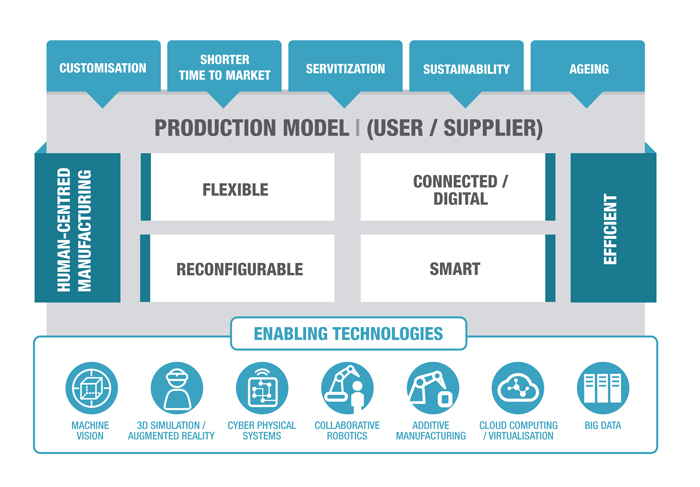
There are three levels in this reference model: Level one covers trends or drivers; level two presents the production model and, lastly, level three addresses enabling technologies. In fact, it can be stated that these three levels are related to the other three mentioned above and offer guidance throughout the thought process:
The strategic position of a company will be related to or in line with any drivers or trends that could have a significant impact on business in the form of customisation, shorter life cycles, sustainability, etc.
The features of an advanced manufacturing Industry 4.0 production model are:
- Flexibility understood as the capability to produce, in extreme cases, in a customised setting.
- Re-configurability understood as the capability to adapt quickly and economically to any product changes.
- Digitization of processes, connecting and integrating the different stages and units of the production process.
- “Smartization” of processes and equipment to develop a smart response; amongst a host of other issues, this also entails learning from previous experiences and requires that unexpected situations be dealt with autonomously.
The degree of significance allocated to each one of these features in terms of the production model will vary as a function of the nature of the trends we wish to address. All production models feature another two very relevant transversal characteristics that are closely in line with the sustainability driver in its economic, social and environmental dimensions:
- A focus on people, regardless of the level of automation. In a production system, people are fundamental to achieve good performance levels.
- Efficiency: the elimination of waste to ensure top value based on using a minimum amount of resources.
Lastly, there are a number of enabling technologies that are usually associated with Industry 4.0 Advanced Manufacturing that have been grouped in two blocks:
- Cyber-physical systems, Big Data – predictive analytics, Cloud Computing: Due to their essence as integrating elements, these technologies might eventually become the backbone of an Industry 4.0 initiative.
- Collaborative robotics, simulation – augmented reality, artificial vision, additive manufacturing: All of these technologies will be relevant to a greater or lesser extent as a function of each case and a number of specific attributes.
Production models are always addressed from the point of view of users and suppliers of equipment, systems and solutions. It is therefore necessary to underscore the opportunities offered by smart and connected machines or systems as equipment suppliers will find it easy to collaborate with users to optimise machine operation and maintenance.
Although certain cultural barriers might hinder a massive degree of implementation, this collaboration will definitely be set into motion in those instances in which the advantages related to pursuing this option are evident. This will give rise to new ways of doing business such as, for instance, paying for using means that provide supporting actions that are not connected to any key activities or processes but that could be related, amongst other things, to issues such as material logistics.
